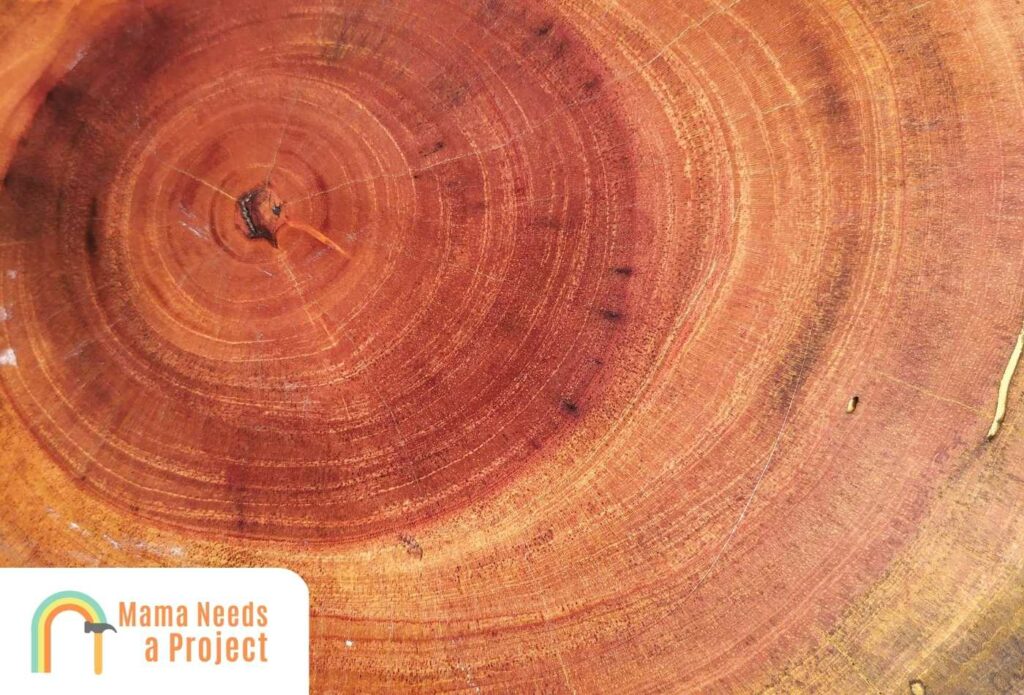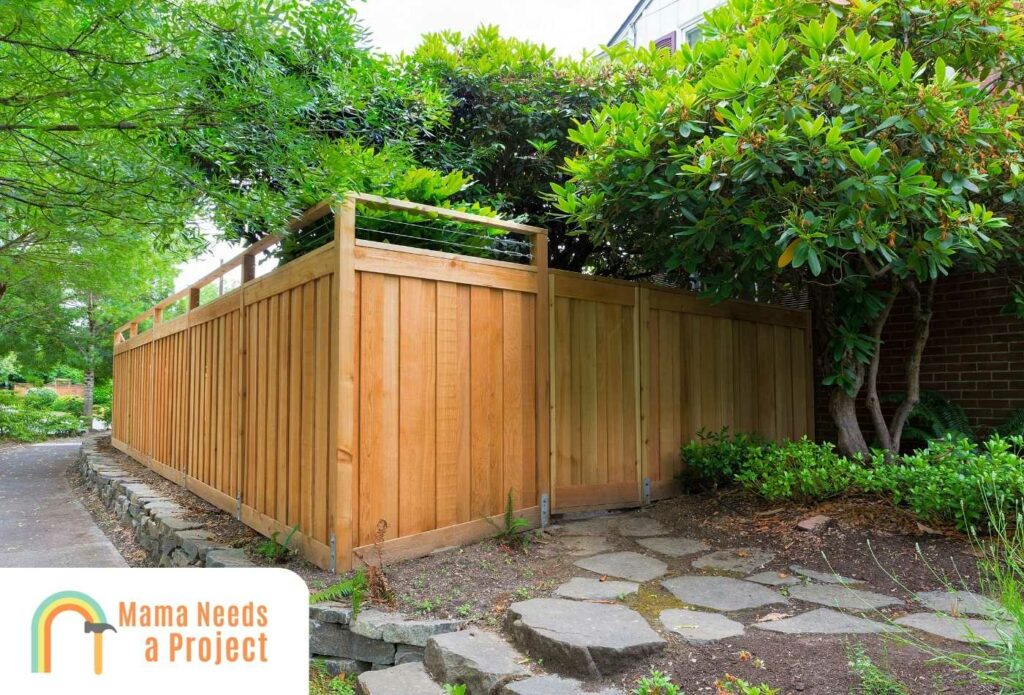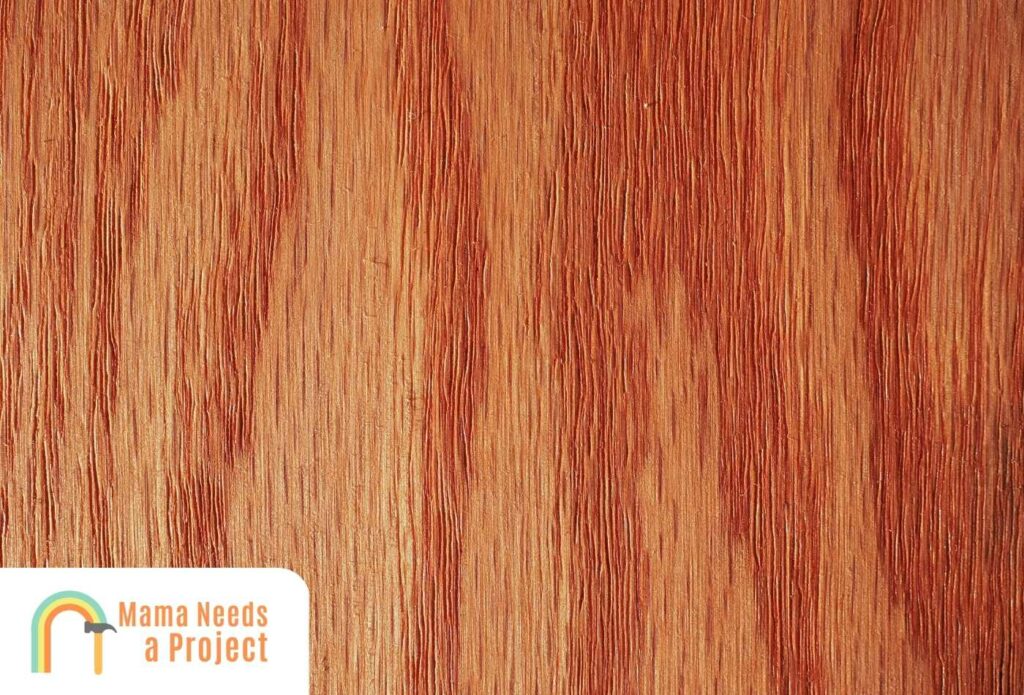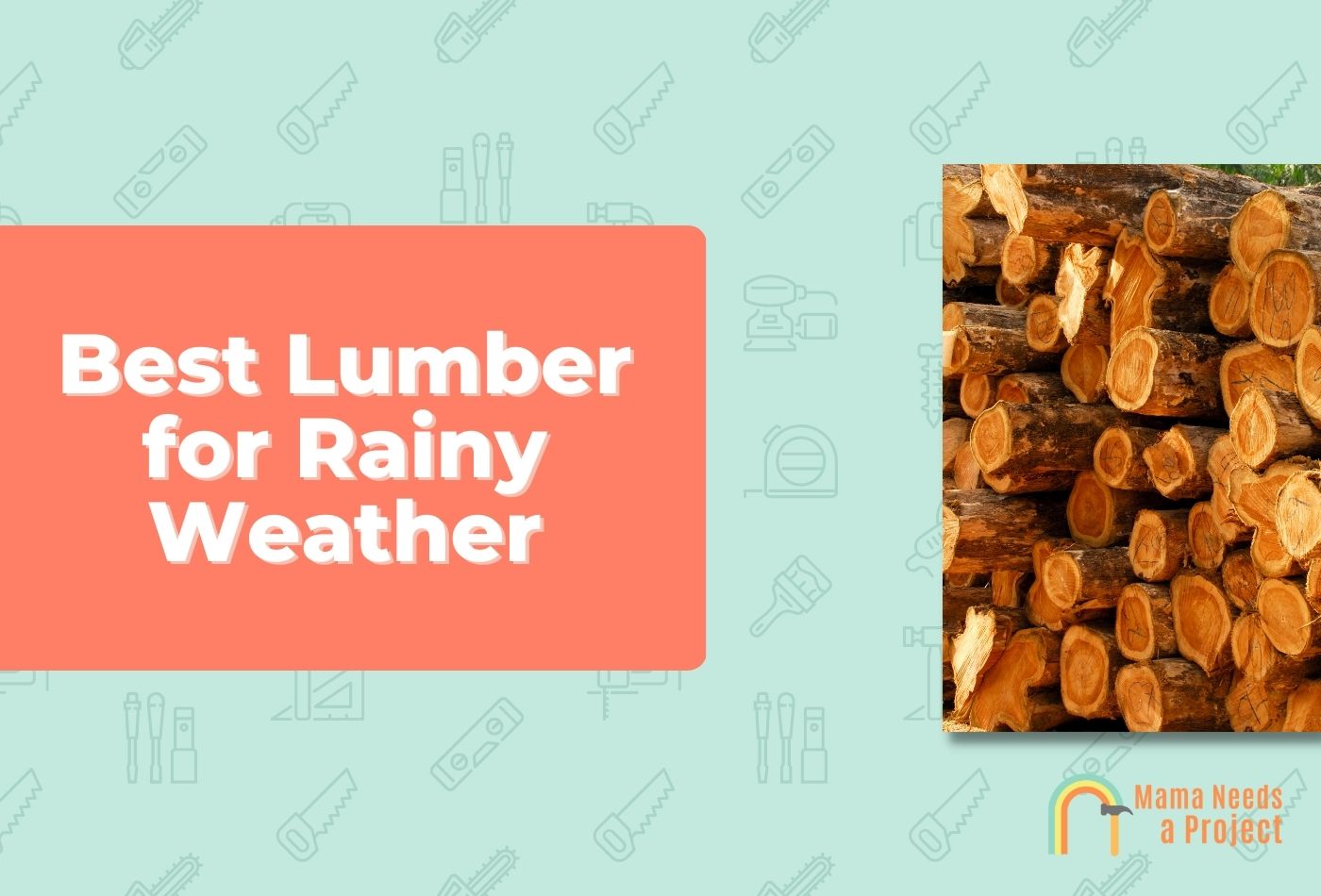What Kind of Lumber is Good for Rainy Weather? (9 Best Woods)
Before you start building a new deck or fence, you’ll probably ask yourself: What kind of lumber is good for rainy weather?
Especially if you live in a rainy climate, knowing the answer to this question is essential, otherwise you may have to replace it sooner rather than later (no thanks!).
Below, I’ll explore the best lumber for rainy weather that’s water resistant and that resist warping. Let’s dig in!
- The best hardwoods for rainy weather are teak, mahogany, redwood, walnut, and cypress; the best softwood is cedar.
- These woods are ideal because they resist moisture well. Therefore, they don’t warp or rot like other woods would if subjected to similar conditions.
- Most of these woods are expensive, in large part because they’re so moisture resistant.
Best Moisture and Water Resistant Woods
Mahogany

Mahogany is a hardwood that can resist the effects of prolonged rain exposure, and this is a main reason why it’s often used to make outdoor structures and furniture.
Along with being moisture-resistant, it’s also durable and visually appealing – which many people appreciate.
Even untreated mahogany, i.e. natural mahogany, is moisture-resistant, and after being treated – it’s virtually waterproof and great for rainy weather.
The main reason why it naturally resists moisture so well is because it doesn’t have pockets or grooves like other woods.
In this way, natural mahogany is unlike imitation mahoganies such as African Mahogany; these imitation species aren’t nearly as moisture resistant and aren’t as good for rainy climates.
Another reason why mahogany doesn’t absorb a lot of moisture is because it’s made up of small wood pores.
Will it absorb moisture? Yes, but not enough to make this an issue.
So with mahogany, you won’t need to worry as much about expansion and contraction, since there’s almost never enough moisture to make either phase significant.
And you’d think that old mahogany would be less moisture-resistant, but the opposite is true; old mahogany resists moisture better than younger mahogany.
Lastly, when polyurethane or another sealant is applied to mahogany, it becomes virtually waterproof.
If you don’t want to use poly to seal mahogany, you can use:
Cool Fact: Mahogany is often used to make boat frames and marine structures because of its ability to resist moisture.
Redwood
Redwood is a moisture-resistant softwood that’s known for its distinct reddish-brown color.
There are three kinds of redwood: Coast Redwood (California redwood), Giant Sequoia, and Sequoiadendron.
Like mahogany, it’s often used to make outdoor furniture, since it’s not only moisture-resistant and durable but visually appealing too.
It’s possible to seal redwood with any of the sealants mentioned already, but this isn’t necessary.
Redwood may be able to resist moisture well, but it has a harder time with UV rays.
In this sense, however, it’s not alone; most woods don’t resist UV rays well, whether we’re talking hardwoods or softwoods.
Over-exposure to UV rays will discolor the wood, but it won’t weaken it, even though the UV rays have broken down the cells that form the outer layer.
For this reason, UV blockers are often applied to redwood, but these don’t do anything to make the wood more moisture resistant.
But is all redwood moisture resistant? Not necessarily.
Redwood heartwood, i.e. the wood that comes from the middle of the trunk, is more moisture-resistant because it’s denser and less porous.
Redwood sapwood, or the wood from the outer part of the trunk, isn’t as moisture-resistant, but it provides adequate natural protection.
If you can’t tell the difference between redwood heartwood and sapwood, look for the terms “con heart” or “con common”. Con heart means mostly or all heartwood, whereas con common means mostly sapwood.
And along with being heavier, redwood heartwood is more red, whereas redwood sapwood is a pale yellowish-brown.
Cedar

Cedar is a great wood for outdoor projects since it’s naturally moisture- and pest-resistant.
As far as outdoor furniture is concerned, cedar is often used to make chairs, benches, tables, couches, and picnic tables, among other things.
It’s also used to make shingles, decking, cladding, fencing, and exterior trim.
Part of the reason why cedar is so moisture-resistant is because it contains polyoxyphenols which also give cedar its pleasant aroma.
Whereas other woods, particularly hardwoods like teak and rosewood, are naturally moist and oily, cedar isn’t, and this is a major reason why it’s so moisture resistant.
But it is porous, so it’s not like it doesn’t absorb moisture—it’s just that moisture doesn’t wreak havoc on it like it does with other woods.
A high amount of moisture can cause other woods to expand and contract significantly, but that doesn’t happen with cedar.
Therefore, cedar is a great wood for climates that experience both very cold and very hot temperatures during the year.
If, however, cedar is over-exposed to moisture, it’ll start to rot. After all, it is an organic, carbon-based material.
Cedar too can be sealed so it’s virtually waterproof, but it’s best to stay away from oil-based polys and oily varnishes, since these can discolor cedar.
Note: Western Red Cedar is one of the most moisture- and decay-resistant cedar species. It’ll stay sound even after prolonged exposure to rainy weather.
Teak
Teak trees are native to southern Asia, and the wood they produce is one of the most durable woods on the planet.
A hardwood that’s often used to create exterior furniture, teak isn’t just durable but moisture-resistant as well.
Unlike other hardwoods, it’s more porous, which should mean it’s more susceptible to moisture-related damage, right?
Wrong! Teak contains highly protective natural oils, and these help with preventing rotting, splitting, and warping.
This wood also does well in direct sunlight, which can’t be said for most woods.
One of the main reasons why you’ll see teak furniture at spas, ski areas, and pools is because it’s so naturally moisture resistant.
This wood can be sealed with polyurethane or a similar varnish, and since it has that reddish brown color you won’t have to worry about oil-based varnishes—which are strongest—discoloring the wood’s surface.
Teak may boast a handful of attractive qualities, but its price reflects this. In other words, this is one of the most expensive woods out there, but for good reason.
Teak is also a great wood for making cutting boards because of these qualities.
If you’re making outdoor furniture with teak wood, check out this guide to cleaning teak wood furniture to keep your outdoor space looking nice!
White Oak
White oak is a hardwood that’s nearly 100% moisture-resistant, and like other woods addressed already, it’s used to make outdoor furniture and structures because it can resist moisture and pests so well.
White oak heartwood is especially moisture-resistant, since its pores are mostly filled with tyloses, a membranous growth.
In addition to exterior construction, white oak is also used to make boats, docks, boathouses, and coastal structures.
White oak’s ability to resist moisture also makes it an ideal indoor wood, particularly for kitchens and bathrooms.
And because it’s visually appealing on top of being durable, it’s also used to make interior paneling, interior trim, etc.
But like all woods, it can only withstand so much moisture before it starts to break down.
To increase the lifespan of white oak, seal it with polyurethane or a similar varnish.
Black Locust
In addition to being moisture-resistant, black locust wood is fire- and insect-resistant as well.
Black locust trees can be found throughout eastern and central North America, and the wood they produce is used throughout the construction industry because it’s durable, aesthetically pleasing, and able to resist a range of erosive factors.
Like white oak, black locust wood isn’t that porous, and its pores are mostly filled with tyloses.
Sure, there’s enough room for some moisture to accumulate, but eventually it’ll dry up without doing much damage to the wood.
This means you don’t have to worry as much about expansion and contraction when you use black locust to make an outdoor structure.
Its natural ability to resist water also makes it ideal for boat building and coastal construction.
But even a wood as strong and beautiful as this has its limits, and over-exposure to adverse weather will do a number on it eventually.
Red Oak

Red oak is a straight-grain hardwood that resists decay caused by moisture, pests, etc.
It has a light, pinkish-brown color, and its visual appeal and durability make it an ideal wood both indoors and outdoors.
Often, outdoor furniture is made of red oak, since this wood complements stone and greenery well.
Its color somewhat resembles Honduran Mahogany, and since they’re both hardwoods it’s easy to get the two mixed up.
Red oak is more porous than other oak species, and therefore it’s more prone to moisture-related damage.
For this reason, it’s not a good hardwood for marine applications, unless it’s been sealed with polyurethane or a similar sealant.
But overall, it still resists moisture better than most softwoods and many hardwoods.
That said, its ability to do so isn’t usually put to the test, as it’s one of the more expensive woods available. The most you should expect your red oak outdoor furniture to handle is 4-5 days of non-stop rainy weather.
Black Walnut
Black walnut is another moisture-resistant hardwood that’s pest- and heat-resistant as well.
Because it possesses all these attractive properties and more, it’s one of the most preferred hardwoods. However, it’s not as sought-after as Brazilian Walnut.
It’s a semi-ring porous wood, meaning its earlywood pores are large but gradually get smaller as you get closer to the heartwood.
Black walnut may be able to withstand rain, snow, and hail, but over-exposure to UV rays can bleach it.
For this reason, it’s best to keep walnut exterior furniture away from direct sunlight. Doing this may also ensure your furniture is away from the other elements.
And like some other hardwoods already mentioned, this wood comes with a higher price tag, but for good reason.
Also, it’s on the heavier side, so if it’s out in the rain for hours it may be difficult to move later, seeing as it’ll probably be waterlogged.
Cypress
The last wood worth mentioning is cypress. But don’t take its low position on the list as an indication that it’s less moisture-resistant than the other woods.
In fact, it’s one of the strongest woods in several respects, which is why it’s used to make piers, bridges, fence posts, boats, exterior siding, stadium seats, and railroad ties.
Like other moisture-resistant hardwoods, cypress produces a resin, and this doesn’t just help with preventing moisture-related damage but insect infestations as well.
It’s among the most expensive hardwoods too, which is definitely something to consider before you purchase exterior furniture made of this material.
What’s the Most Effective Wood Sealant?
Polyurethane is a fantastic sealant for hardwoods and softwoods.
The two main kinds are oil-based and water-based poly. Oil-based is tougher but it leaves an amber tint, whereas water-based is quick-drying but not as strong.
But both polys are easy to apply, cost-effective, and (most importantly) durable.
In fact, wood that’s coated with poly is pretty much waterproof, provided the poly is touched up 3-4 times a year.
You can also use one of these stains for outdoor furniture or these stains for pressure treated wood.
FAQs
What is the most weather-resistant lumber?
The most weather-resistant wood is teak, followed by mahogany, redwood, and cypress. Not only can teak withstand prolonged exposure to rain, wind, hail, and humidity, but it also resists termites and other pests better than most woods.
What wood lasts the longest outdoors?
Mahogany and teak can endure more than a decade of exposure to the elements, whereas other hardwoods are lucky to last 10 years under similar conditions. Cumaru wood, which grows throughout Central and South America, lasts a long time too, and so does Thermory.
Final Thoughts
In the end, if moisture-resistance is a big concern of yours when you’re trying to choose a wood for an outdoor project, you can’t go wrong with any of these woods.
That said, the woods that hold up best against moisture are teak, mahogany, redwood, and cedar, which is why you’ll fine exterior furniture and structures made of these woods all over the world.
Just remember—before you hit the checkout counter at your local lumber yard—that the properties which make these woods rot-resistant and durable make them expensive as well.

